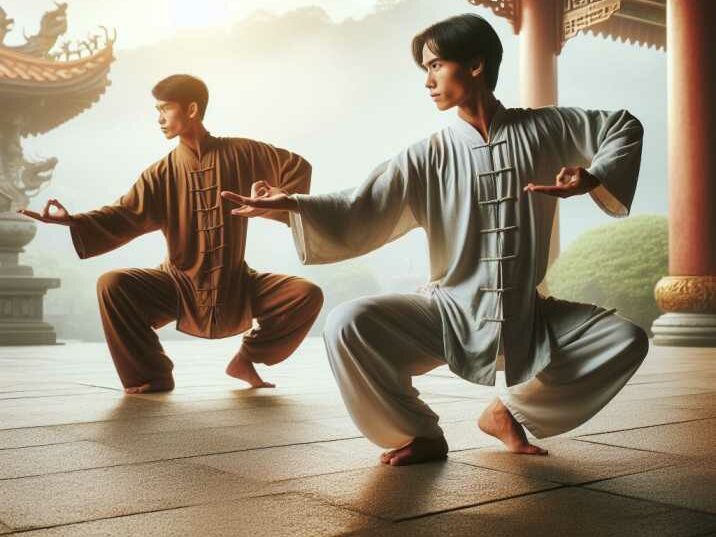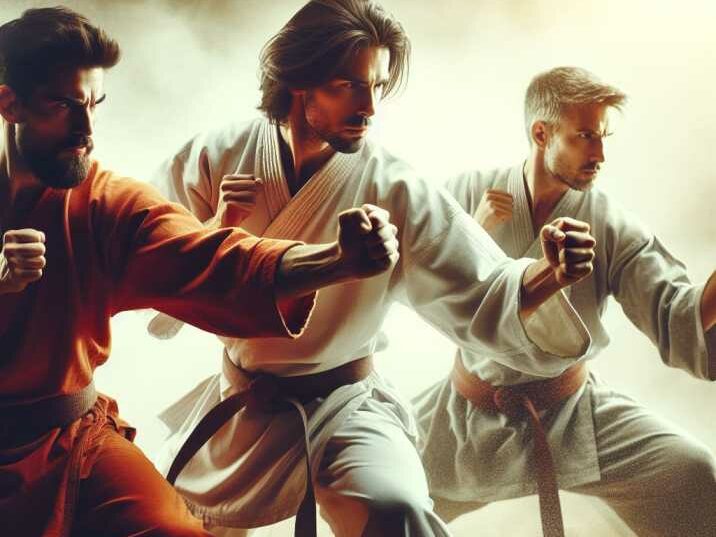Introduction:
Table of Contents
Kung Fu, an ancient Chinese martial art, has captured the fascination of people around the globe for centuries. With its rich history and diverse techniques, Kung Fu has evolved over, giving rise to both traditional vs. contemporary Kung Fu practices. In this article, we delve into the differences between traditional vs. contemporary Kung Fu, shedding light on their unique characteristics, philosophies, and techniques.
Traditional vs. Contemporary Kung Fu
Understanding Traditional Kung Fu
Traditional Kung Fu, also known as “Classical Kung Fu,” traces its roots back to ancient China, where it was practiced and refined by monks in temples. This form of Kung Fu emphasizes discipline, honor, and respect for tradition. Traditional Kung Fu encompasses various styles, such as Shaolin, Wing Chun, and Tai Chi, each with its distinct techniques and philosophies.
Techniques and Forms
Traditional Kung Fu places a strong emphasis on forms or “katas,” which are choreographed sequences of movements. These forms focus on balance, precision, and fluidity, requiring practitioners to master intricate stances and strikes. Additionally, traditional Kung Fu incorporates a wide array of stances, blocks, and strikes, each designed for specific combat scenarios.

Philosophy and Culture
At the core of traditional Kung Fu lies a deep-rooted philosophy that transcends mere physical combat. Practitioners of traditional Kung Fu are taught to cultivate virtues such as discipline, patience, and humility. Moreover, traditional Kung Fu is deeply intertwined with Chinese culture, drawing inspiration from Buddhist and Taoist principles.
Exploring Contemporary Kung Fu
Contemporary Kung Fu, also known as “Modern Kung Fu” or “Mixed Kung Fu,” represents a departure from traditional practices. Born out of the need for practical self-defense and combat effectiveness, contemporary Kung Fu incorporates elements from various martial arts disciplines, including boxing, kickboxing, and Brazilian Jiu-Jitsu.

Practical Application
Unlike traditional Kung Fu, which often focuses on ritualistic forms and techniques, contemporary Kung Fu prioritizes real-world application. Practitioners of contemporary Kung Fu undergo rigorous training that simulates actual combat scenarios, preparing them for self-defense situations.
Adaptability and Innovation
Contemporary Kung Fu practitioners are encouraged to adapt and innovate, incorporating techniques from other martial arts disciplines to enhance their effectiveness. This adaptability allows contemporary Kung Fu to evolve continuously, staying relevant in today’s dynamic world.
Key Differences between Traditional vs. Contemporary Kung Fu
While both traditional and contemporary Kung Fu share a common heritage, they differ significantly in their approaches and philosophies. Here are some key differences between the two:
- Techniques: Traditional Kung Fu emphasizes form and precision, while contemporary Kung Fu focuses on practicality and effectiveness.
- Philosophy: Traditional Kung Fu emphasizes discipline and cultural heritage, whereas contemporary Kung Fu prioritizes adaptability and innovation.
- Training Methods: Traditional Kung Fu often involves repetitive forms training, while contemporary Kung Fu incorporates sparring and real-world simulations.
- Cultural Significance: Traditional Kung Fu is deeply rooted in Chinese culture and spirituality, while contemporary Kung Fu reflects a more globalized and eclectic approach.
Table: Comparison Between Traditional vs. Contemporary Kung Fu
| Aspect | Traditional Kung Fu | Contemporary Kung Fu |
|---|---|---|
| Techniques | Emphasizes form and precision | Prioritizes practicality and effectiveness |
| Philosophy | Focuses on discipline and cultural heritage | Values adaptability and innovation |
| Training Methods | Involves repetitive forms training | Incorporates sparring and real-world simulations |
| Cultural Significance | Deeply rooted in Chinese culture and spirituality | Reflects a more globalized and eclectic approach |
Conclusion:
In conclusion, the distinction between traditional vs. contemporary Kung Fu lies in their approaches, philosophies, and techniques. While traditional Kung Fu upholds the values of discipline and cultural heritage, contemporary Kung Fu embraces adaptability and innovation. Whether one chooses to practice traditional or contemporary Kung Fu, both forms offer valuable insights into the rich and diverse world of martial arts.
FAQs:
- What is traditional Kung Fu? Traditional Kung Fu refers to classical martial arts practices rooted in ancient Chinese culture, emphasizing discipline, form, and cultural heritage.
- What is contemporary Kung Fu? Contemporary Kung Fu, also known as modern or mixed Kung Fu, incorporates elements from various martial arts disciplines and prioritizes practicality and real-world application.
- Which is better, traditional or contemporary Kung Fu? The choice between traditional and contemporary Kung Fu depends on individual preferences and goals. Traditional Kung Fu focuses on cultural heritage and discipline, while contemporary Kung Fu emphasizes adaptability and effectiveness.
- Can I learn both traditional and contemporary Kung Fu? Yes, many practitioners choose to incorporate elements from both traditional and contemporary Kung Fu into their training regimen, allowing for a well-rounded martial arts experience.
- Is Kung Fu only for self-defense? While Kung Fu is often associated with self-defense, it also offers numerous physical and mental benefits, including improved fitness, coordination, and focus.


